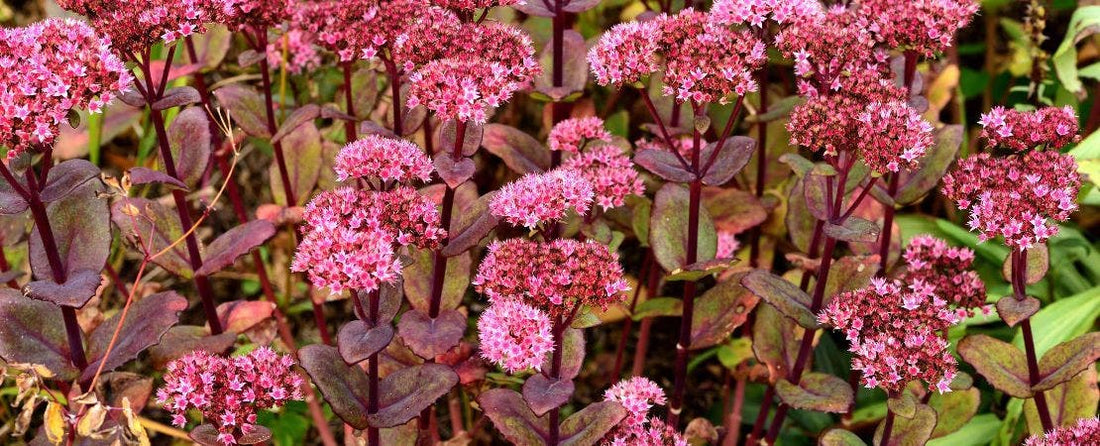Guide to Growing and Caring for Sedum Plants

Sedum plants, also known as stonecrops, are a delight for gardeners, offering a myriad of colors, textures, and forms to enhance virtually any garden space. I'm excited to share with you the secrets to growing and caring for these versatile and resilient plants.
Caring for Your Sedum
To keep your sedum plants healthy and thriving, follow these care tips:
- Fertilizing: Sedum plants are light feeders and do not require frequent fertilization. A balanced, slow-release fertilizer applied in spring is usually sufficient.
- Deadheading: Remove spent flowers to encourage continuous blooming throughout the growing season. This also helps maintain the plant's appearance and prevents self-seeding.
- Pruning: Trim back any leggy or damaged stems in early spring to promote new growth. Sedum plants benefit from occasional pruning to maintain their shape and vigor.
- Dividing: Every few years, divide mature sedum plants to rejuvenate their growth and prevent overcrowding. Dig up the clump, separate the sections, and replant them in fresh soil.
- Pest and Disease Control: Sedum plants are generally resistant to pests and diseases, but keep an eye out for common issues like aphids or powdery mildew. Treat promptly if noticed.
Enjoying Your Sedum Garden
With their vibrant blooms, interesting foliage, and low-maintenance nature, sedum plants add beauty to your garden space. Here are some ways to make the most of your sedum garden:
- Rock Gardens: Create stunning rock gardens by combining different sedum varieties with rocks and gravel. Their drought tolerance makes them ideal for these dry landscapes.
- Containers: Grow sedum in containers and pots to add texture and color to your patio or balcony. Use well-draining soil and provide regular water and sunlight.
- Ground Covers: Many sedum varieties make excellent ground covers, spreading to form dense mats of foliage and flowers. Plant them along pathways or in between stepping stones.
- Butterfly Gardens: Sedum plants are a favorite nectar source for butterflies and bees. Create a butterfly garden by planting sedum along with other nectar-rich flowers.
Seasonal Care Tips
- Spring: As new growth emerges, remove any winter debris and apply a light layer of compost around the base of sedum plants.
- Summer: Monitor watering needs, especially during hot and dry periods. Deadhead spent blooms to encourage continuous flowering.
- Fall: Enjoy the changing colors of sedum foliage as temperatures cool. Cut back any leggy stems and prepare for winter.
- Winter: Sedum plants are generally hardy, but in colder climates, protect them with a layer of mulch or frost cloth during extreme cold snaps.
With these tips and suggestions, you're well on your way to growing healthy and beautiful sedum plants in your garden. Whether you're creating a colorful rock garden, adding texture to containers, or attracting pollinators to your landscape, sedum is sure to bring easy-care beauty to your outdoor space.


